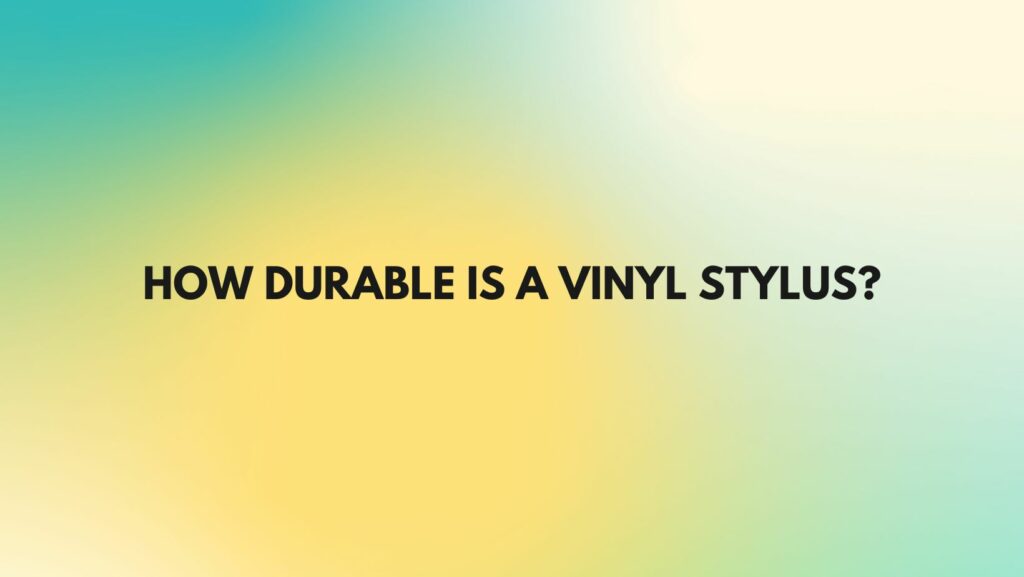In the captivating world of vinyl playback, the vinyl stylus emerges as a silent sentinel, delicately tracing the grooves of records to unlock the symphony of analog sound. As enthusiasts revel in the timeless allure of vinyl, a fundamental question often surfaces: How durable is a vinyl stylus? This article embarks on a journey to unravel the robust resilience inherent in these tiny yet vital components, exploring the factors that contribute to their durability and offering insights into maintaining their longevity.
1. Material Composition:
At the heart of a vinyl stylus lies its tip, typically crafted from materials renowned for their durability. The most common materials include diamond and sapphire, chosen for their hardness and resistance to wear. This choice of resilient materials forms the foundation for the overall durability of the stylus.
2. Precision Engineering:
Vinyl styluses are feats of engineering precision, designed to delicately traverse the microscopic grooves of records. The meticulous craftsmanship ensures a delicate balance between precision and durability, allowing the stylus to withstand the demands of repeated use.
3. Wear-Resistant Coatings:
Many stylus tips are coated with wear-resistant materials, further enhancing their ability to endure the friction encountered during playback. These coatings contribute to minimizing wear and extending the stylus’s operational life.
4. Stylus Shape and Profile:
The shape and profile of a vinyl stylus play a pivotal role in its durability. Different stylus shapes, such as conical, elliptical, Shibata, or Microline, can influence the distribution of force on the record grooves. Properly aligned and shaped styluses contribute to even wear patterns, promoting durability over time.
5. Tracking Force Management:
Proper tracking force—the downward pressure exerted by the stylus on the record—is a critical consideration. Adhering to manufacturer recommendations for tracking force ensures that the stylus is neither overly stressed nor excessively light, contributing to a balanced approach that enhances durability.
6. Maintenance Practices:
Routine maintenance practices are essential for preserving the durability of a vinyl stylus. Simple habits such as gentle cleaning with a stylus brush and keeping records free from dust and debris go a long way in preventing premature wear and maintaining optimal performance.
7. Frequency of Use:
The frequency with which a turntable is used influences the wear experienced by the stylus. While regular use is expected, excessively long and intense listening sessions may contribute to quicker wear. Balanced use patterns support the overall durability of the stylus.
8. Auditory Awareness:
Audiophiles, with their acute sensitivity to sonic nuances, often rely on auditory cues to gauge the health of their stylus. Changes in sound quality, tracking issues, or distortion can serve as indicators that the stylus requires attention or replacement.
9. Replacement Considerations:
Understanding the durability of a vinyl stylus also involves recognizing when it’s time for a replacement. While these components are designed to be durable, they do undergo wear, and timely replacements ensure continued optimal performance and the preservation of vinyl records.
Conclusion:
As the vinyl stylus embarks on its delicate dance through the grooves, it serves as a resilient guardian of analog sound. Crafted with precision, fortified with durable materials, and subject to meticulous engineering, the vinyl stylus endures as a testament to the enduring magic of vinyl playback. Nurturing this durability through conscientious maintenance practices and understanding when to consider replacement ensures that the vinyl stylus remains a faithful companion, unlocking the timeless symphony of analog audio for generations of audiophiles to come.


